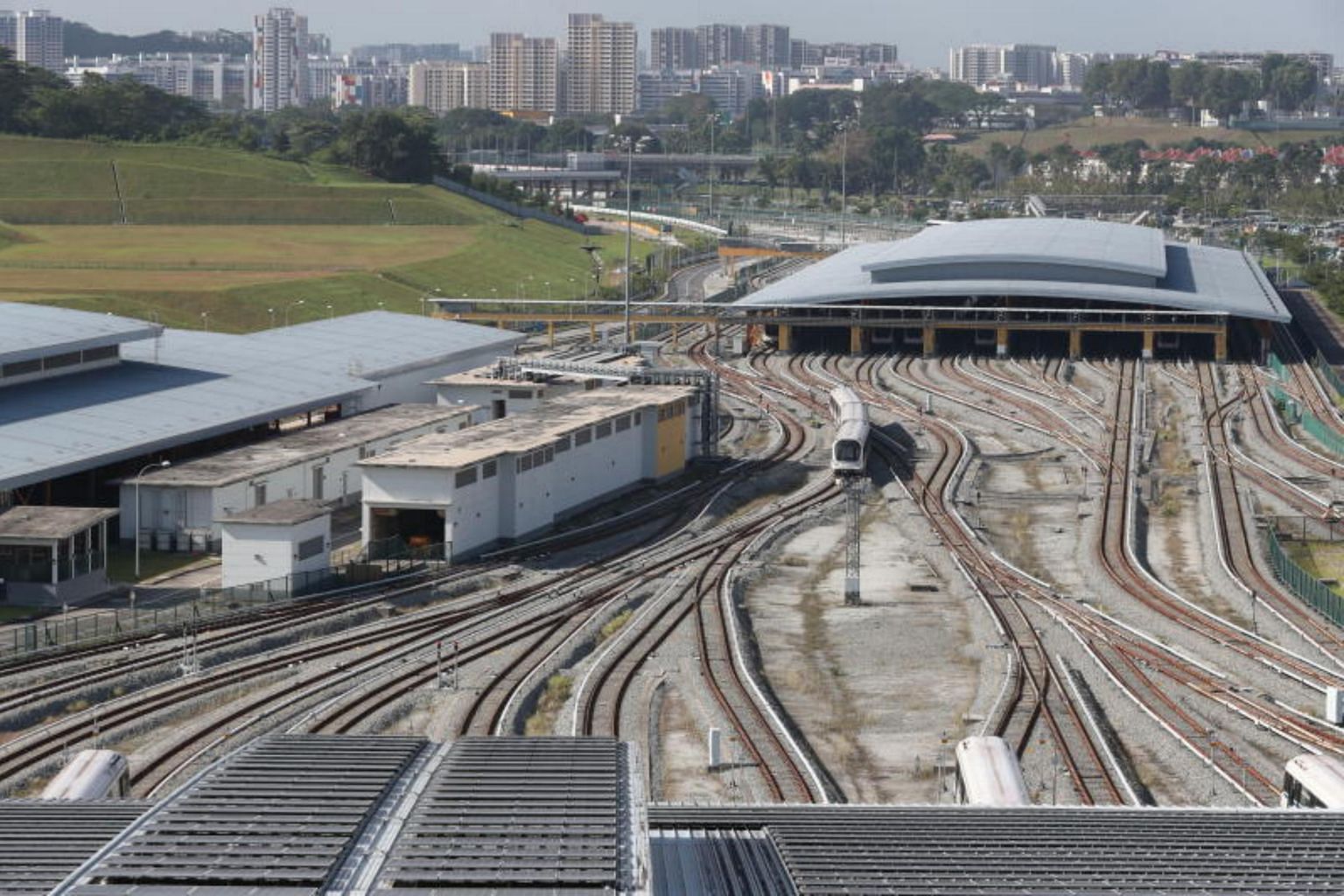$100m to build simulation facilities on all train lines in Singapore to improve rail reliability
Sign up now: Get ST's newsletters delivered to your inbox

The simulation facility for the Downtown Line at Gali Batu Depot will fully open at the end of the year.
ST PHOTO: TIMOTHY DAVID
Wong Kai Yi
Follow topic:
SINGAPORE - A sum of $100 million over five years has been set aside to build simulation facilities on all train lines in Singapore to improve rail reliability.
Such facilities, resembling command centres, let operators simulate anything from a track fault to cyber security threats against the line.
The hardware and software are replicas of real-world systems but are completely disconnected from actual operational train lines, giving operators the freedom to run simulation scenarios.
A simulation facility at Bishan Depot for the North-South and East-West train lines, completed at the end of 2018, is currently running, while one for the Downtown Line (DTL) at Gali Batu Depot will fully open at the end of the year.
Future simulation facilities at Mandai Depot for the Thomson-East Coast Line (TEL), Sengkang Depot for the North-East Line and Kim Chuan Depot for the Circle Line will open progressively from now to end-2022.
One for the future Jurong Region Line will also be built.
These facilities are loaded with hardware and software similar to actual signalling systems, allowing operators to test out new signalling software in isolation before uploading them to existing train lines, as well as help them gain experience in troubleshooting system faults.
Engineers can simulate scenarios, such as how signalling software modifications interact with regular train operations, implementing temporary speed restrictions or holding a train at a platform in an emergency situation.
The phased opening of the TEL in 2024 and the addition of three new stations to the DTL in 2025 will be among the first few projects to take advantage of the new simulation facilities.
These simulation facilities make testing more robust and minimise potential disruptions to passenger service, the Land Transport Authority said.
To date, the Bishan facility has already been used to test signalling software for the East-West Line resignalling project, and also for simulations to integrate Canberra station into the North-South Line.
Speaking at the opening of the second simulation facility at Gali Batu Depot for the DTL, Transport Minister Khaw Boon Wan said it is important to develop "deep technical understanding" of the complex signalling systems.
Such home-grown knowledge is an "important strategic capability" and is critical for a safe and reliable MRT system, he added.
Operating a "virtual twin" to existing train lines means more time can be freed up for track maintenance work, which could previously be done only in a small two- to three-hour window every night, Mr Khaw said.
With more such facilities, revenue service will be less affected and new trains and stations can be integrated into existing lines with less hassle.
An added benefit of building these facilities is that systems providers like Thales, Siemens and Alstom have committed to establishing a long-term presence in Singapore, which in turn allows them to use the Republic as a base to expand in the region.
"Such arrangements will further anchor world-class rail expertise here and provide good jobs for talented Singaporeans," Mr Khaw said.
The minister noted that although $100 million is "a lot of money", it will be a worthwhile investment for the future as billions will already be spent on new train lines.
All MRT lines now have an MKBF - mean kilometres between failures - of more than one million train-km, and it is important to sustain this level of reliability, he added.

